Prince of Transylvania Ferenc Rákóczi II, a Hungarian nobleman, the imperial prince of the German-Roman Empire, the ruling prince of the Hungarian orders allied for the freedom of the homeland, and the knight of the Order of the Golden Fleece, died in exile in Turkey in 1735.
Ferenc Rákóczi, the ruling prince, has always been a symbolic figure in Hungarian history. A nobleman, a prince who made an alliance with the peasants and they fought together for an independent, free Hungary.
The cult of Ferenc Rákóczi did not diminish at home for a minute, every era found a hero in his persona, so it made sense that on the 200th anniversary of his death he would be remembered, which happened in 1935. It was then that the National Rákóczi Association suggested that a collection be started to erect a statue of the prince.
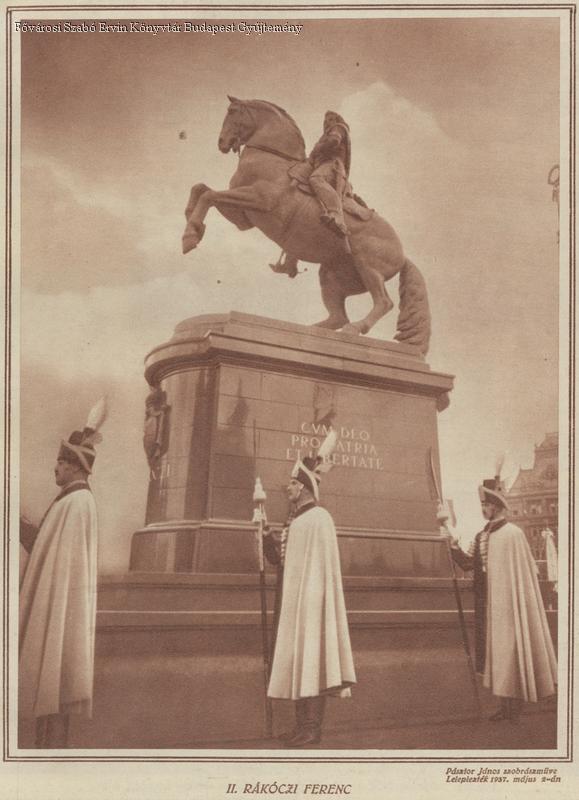
The sculpture immediately after its unveiling (Photo: FSZEK Budapest Collection) .jpg)
Cum Deo pro Patria et Libertate - With God for the Homeland and Freedom: the motto of the Rákóczi War of Independence on the statue's inscription (Photo: Balázs Both/pestbuda.hu)
The erection of the statue was planned for 1936, and its location was envisaged in Kossuth Square. However, there was already something in the place, namely the ventilation shaft of the House of Representatives. (The ventilation of the halls of the Parliament was solved by a very witty method, with underground tunnels.) The ventilation shaft had to be relocated first.
János Pásztor was asked to design the statue. The 6 May 1937 issue of the Pesti Napló wrote about the difficulties of placement and composition:
„The creation and placement of a truly monumental equestrian statue in a vast square in a metropolitan setting with a mixed architectural character and a semi-Gothic, semi-modern emphasis. A princely monument, a representative depiction of a hero, in the Baroque style, after Rákóczi's time expressed itself in the Baroque. (Where are we from the art of the Renaissance, which clothed even the most distant past into its own clothes, made modernity essential, and rewrote everything into its own formal language!) Pásztor's Rákóczi is a baroque statue with a prancing, heavy baroque horse and an armoured baroque figure.”
The unveiling of the statue took place on Sunday, 2 May 1937, with the entire government present, led by Governor Miklós Horthy, there was a speech by the prime minister, and after Prime Minister Kálmán Darányi, Minister of Culture Bálint Hóman also shared his thoughts. The light of the inauguration of the sculpture was enhanced by a military parade, with gun-salutes fired from a cannon from the Gellért Hill, and of course the Rákóczi March was heard. Magyarország wrote on 4 May 1937:
“The equestrian statue of Ferenc Rákóczi II was unveiled in Kossuth Lajos Square yesterday morning with dazzling splendour, the sound of cannons and the ringing of bells. The whole of Hungary marched around the statue covered with a huge national-coloured veil.”
After the inauguration of the statue, it was wreathed, first by Miklós Horthy, then Bertalan Széchenyi, the Speaker of the Upper House, and Sándor Sztranyavszky, Speaker of the House of Representatives, laid their wreaths. It caused a loud applause from the audience, when three Habsburg archdukes, namely Joseph, Franz Joseph, and Albrecht, also placed their wreaths at the statue of the great opponent of the Habsburgs. The government, the Turkish Embassy, the army, the capital and the county delegations also laid wreaths.
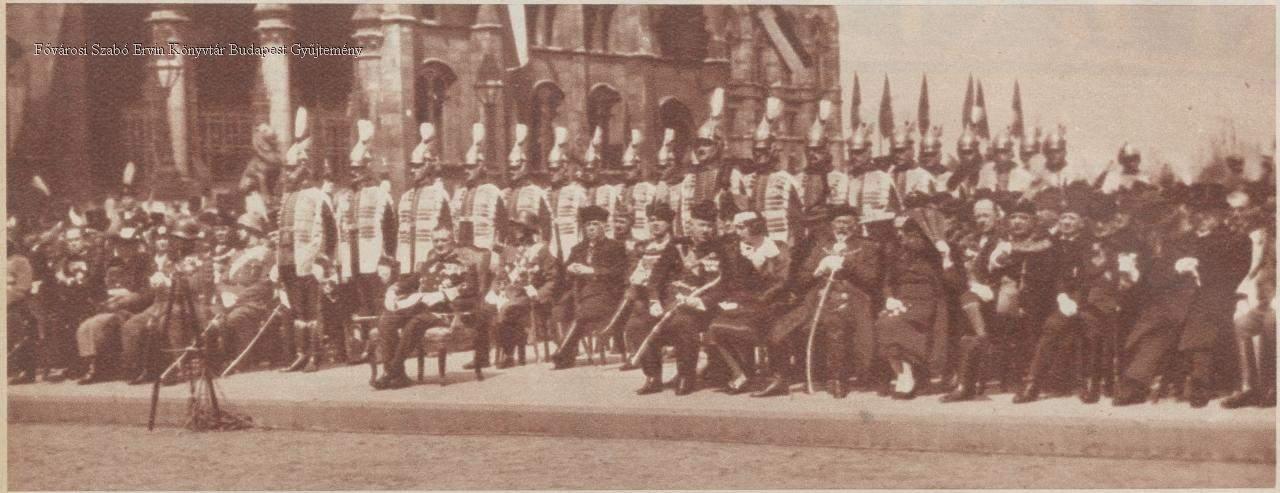
The entire political leadership was present at the inauguration of the sculpture in 1937 (Photo: FSZEK Budapest Collection)
The ceremonies did not end here, because Secretary of State István Bárczy, in charge of the erection of the statue, gave a brunch, then there was a ceremony at the national flag and the Protestant denominations in Budapest held a solemn preaching in the Kálvin Square Reformed Church and the Deák Square Lutheran Church. As part of the series of ceremonies, a gala performance was held that evening at the Opera, where Bánk Ban was performed.
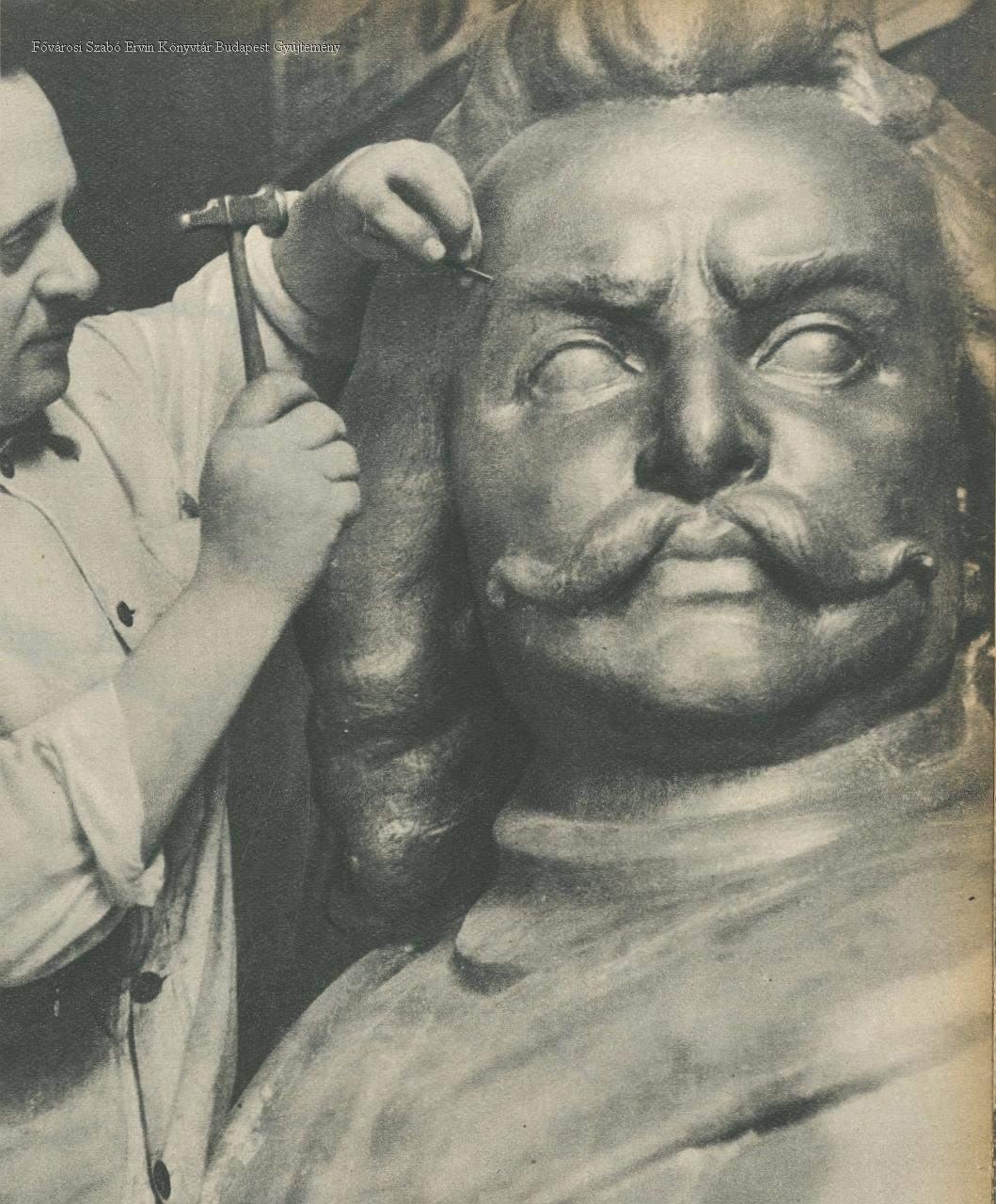
The size of the sculpture is well shown by the size of the sculptor (Photo: FSZEK Budapest Collection)
But what is the statue like? Its design is definitely monumental, as it is 6 metres high, the prince sits on a prancing horse. The contemporary press, the already quoted Pesti Napló, wrote:
“Most of the three-quarter-footage, reported in the papers, gives a false picture of the statue, which is better-looking in reality. A horse rising on two legs and leaning on its tail is not as jumping-steep as it appears in the pictures. It prancing in a balanced way, floating and yet static. The prince in the stirrup sits almost standing. He presses the bridle hard back with his left arm, causing the horse's neck to bend in a strong arc and holding the scepter in his swinging right, reminiscent of Corleoni's movement. There is a dramatic tension in the whole that fits the drama of Rákóczi's life and destiny, but also his serious majestic demeanor. The prince's upward-looking, uncovered head is proud, showing strength and determination as he looks to the left, toward the Parliament building. The viewers' first impression - especially if they look at the sculpture from the side and from a suitable distance - is usually favourable. At most, the tree-like, stiff, thick ponytail impairs the momentum of the bustling silhouette, revealing its supporting role.”
The prince looks at the Parliament building in contemporary baroque armour with a strict look, sitting princely and confidently on his horse. The inscriptions on the pedestal of the statue are also interesting, as the Latin inscription was incorrect, and under socialism the first half, the part referring to God of the motto of the ruling prince, "Cum Deo pro Patria et Libertate", 'With God for the Homeland and Freedom' was removed. A separate article about this was made in the columns of PestBuda a few years ago.
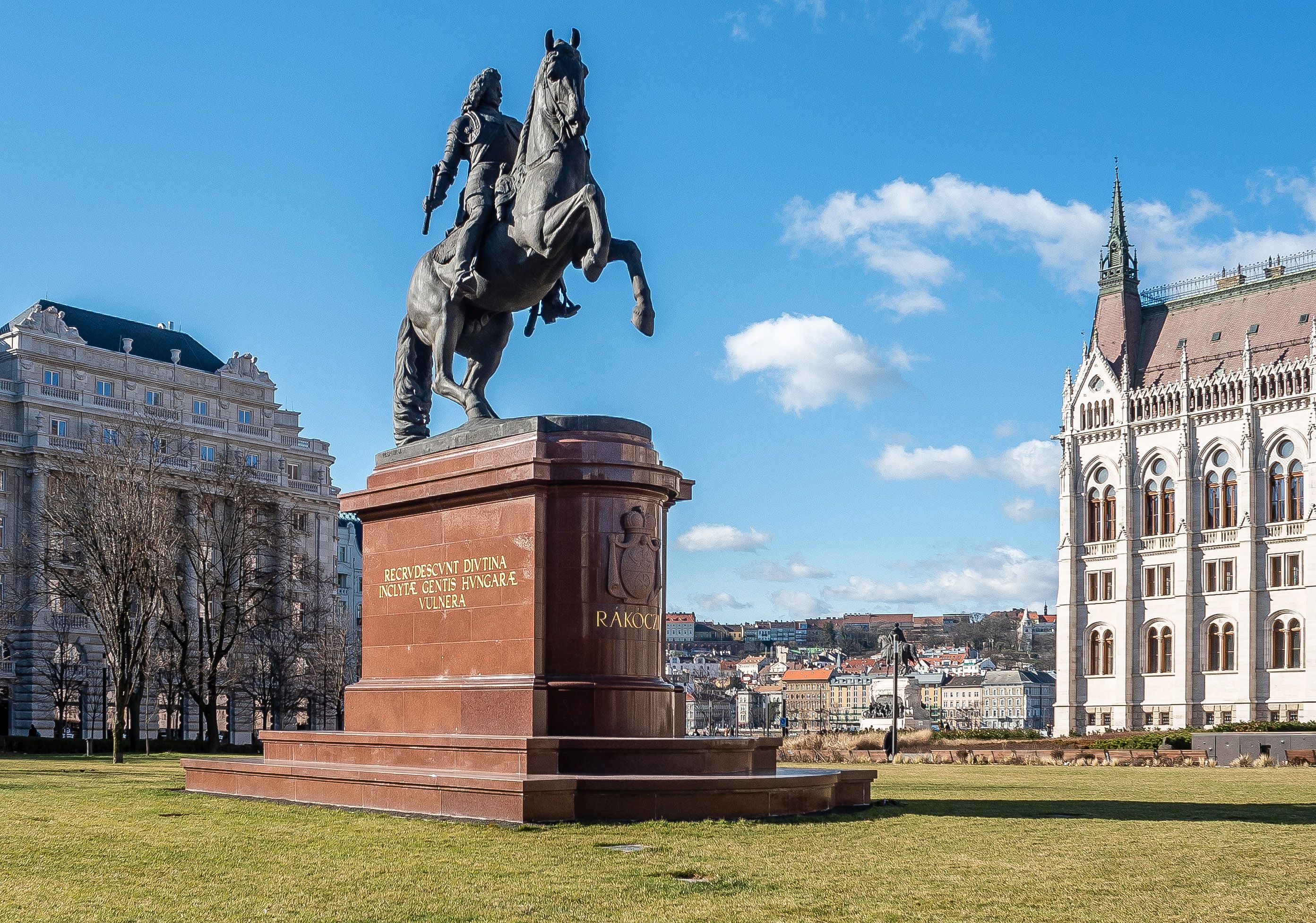
Statue of Prince Ferenc Rákóczi II in Kossuth Square. The work of sculptor János Pásztor (Photo: Balázs Both/pestbuda.hu)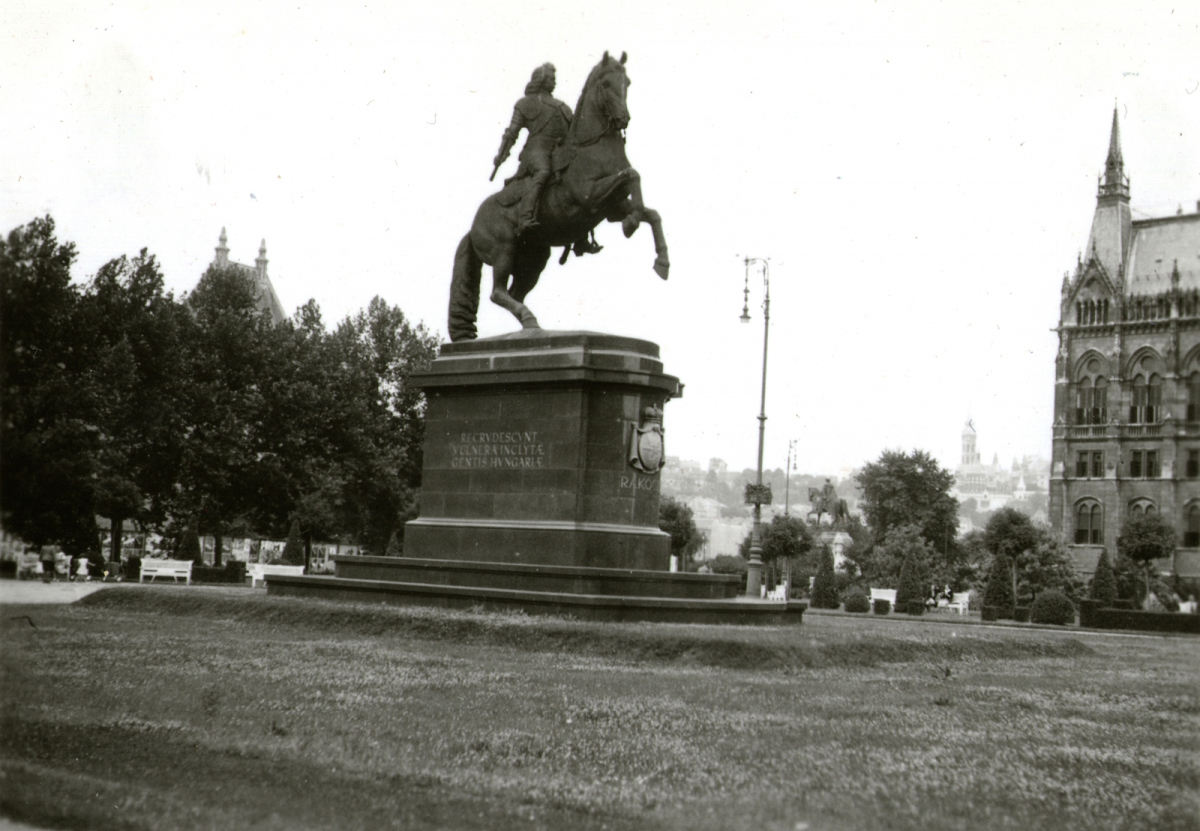
The statue in 1938 (Photo: Fortepan/No.: 129778)
The statue has been standing on Kossuth Square for 85 years now, it was restored a few years ago during the renovation of the square, so it can now be seen in its original splendor.
Cover photo: The sculpture in the 1940s (Photo: Fortepan/No.: 153336)

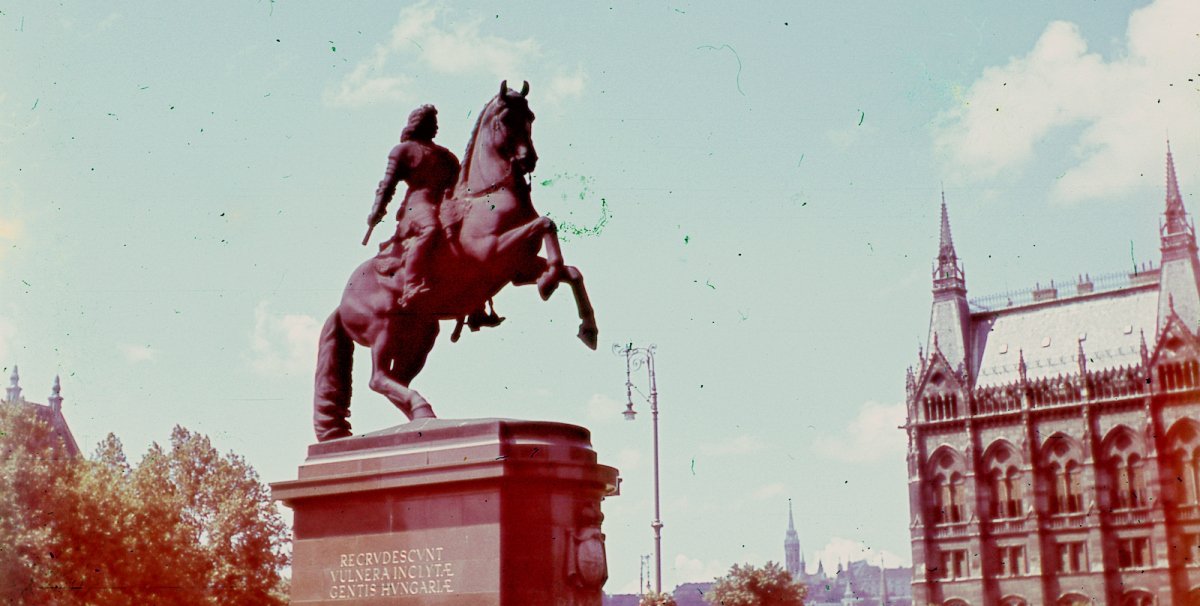


































Hozzászólások
Log in or register to comment!
Login Registration